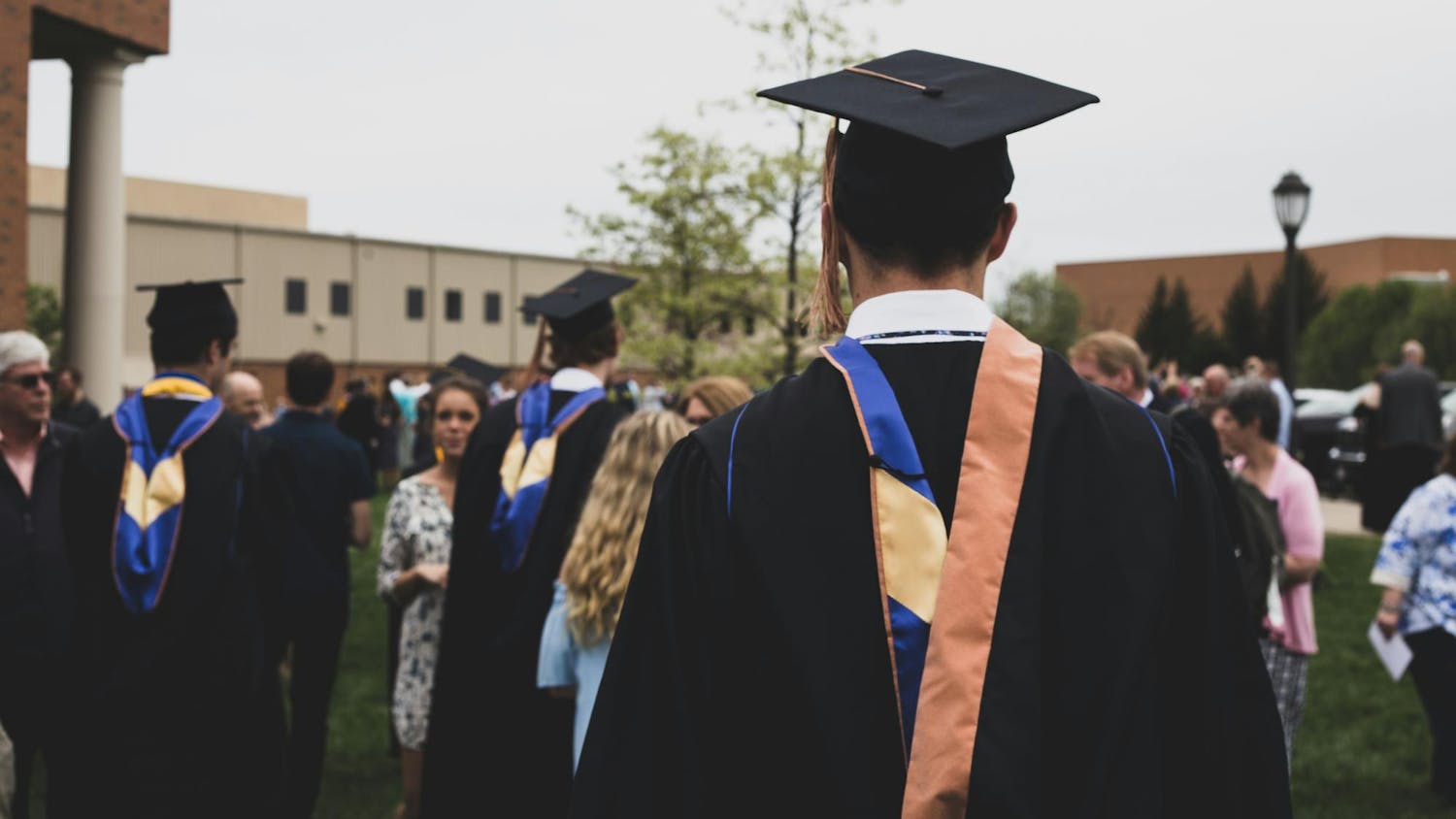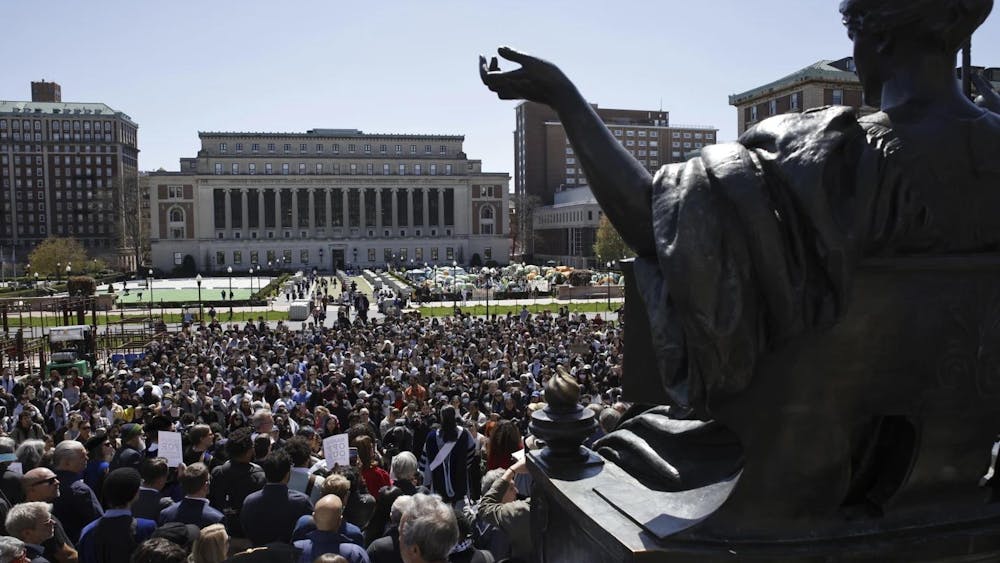Notre Dame graduate Molly Sammon stood in front of her high school students at Chicago Vocational Career Academy in the south side of Chicago on Sept. 4 for the first day of the school year. It was her first day as a teacher.
Six days later, Sammon stood across the street from her empty classroom, hoisting a sign in the air on behalf of the Chicago Teachers Union (CTU). Sammon, a Teach for America corps member, joined forces with teachers from her school and public schools across the city in the eight-day strike that kept kids from their classrooms and brought teachers to the picket lines.

"It became apparent that there was a lot of community and parent support," Sammon said. "Parents know what the school is like. They know we're missing a lot of really basic needs. ... We're missing adequate textbooks, we're missing air conditioning, athletic equipment and computers. So they know our struggle."
City officials and union delegates reached an agreement and suspended the strike Wednesday, and the union members will vote to ratify the new contract in coming weeks. Chicago Public Schools (CPS) teachers returned to their classrooms Thursday after lengthy debates on teacher evaluations, school resources and other education issues.
The Chicago Vocational Career Academy where Sammon teaches is in a low-income neighborhood on the south side of Chicago. With the strike, Sammon said she worried about her students on the streets instead of inside the classroom.
"A lot of students here get breakfast, lunch and dinner supplied for them by the state. ... I think daycare becomes a problem when you are working paycheck to paycheck, and you depend on the school for daycare," she said. "I spent all of the strike thinking about, 'What are they doing right now, are they safe, are they fed? I know they aren't thinking about math, but are they getting their basic needs met?'"
But on Thursday, Sammon finally returned to her classroom.
"Today really felt like the first day of school," she said Thursday. "Kids were excited and hugging their friends in the hallway. I took today to go over all the rules. A few of my students said that they were ready to start learning math again, so naturally that got me excited to continue the rest of the year strike-free and with a solid working contract."

As the storm brewed during Sammon's first days at school, she said she warned her students about the possibility of the strike before they left class Friday, not knowing if they would be back in their desks Monday.
Sammon, a former sports writer for The Observer, said she turned the strike into a lesson about how her students could engage their community by following the local media.
"This was so fun for me to tell my students, 'Watch the news. Go home and watch the news on Sunday night,'" she said. "For the first time, these kids were involved ... and their lives were directly involved in politics."
A voice that matters
The strike did make headlines around the country as the nation's third largest public school system fought through negotiations over the past two weeks.
Dr. Maria McKenna, primary advisor for students in the Program for Education, Schooling and Society (ESS), said the national attention to the strike could bring more education issues to the table for discussion.
"I think that this strike and the complexity of the issues that both sides were dealing with require people from all sorts of different disciplines to come together and really think in new ways about education, about children and learning and about teaching," she said.
McKenna participated in a forum discussion hosted by the EduClub on Wednesday evening about the strike, along with labor historian and history professor Dr. Dan Graff.
During the forum, Graff said both the city and the CTU made sacrifices in the negotiations. The school board promised the teachers to hire 600 new teachers in art, music and other non-core classes, as well as more school counselors. In a city where many schools began class without any textbooks, the board also guaranteed textbooks would arrive before the first day of class.
However, Graff said the teachers union conceded on the issue of teacher evaluation, which will continue to utilize standardized testing results at least in part.
"My sense as an outsider and an observer is that at least internally, the union came away stronger by this fight, by the activity itself of banding together and striking, showing strength in the face of some real strong attempts to take away some of the CTU's bargaining power," Graff said.
The strike was the first major strike in an American metropolitan area in more than two dozen years, Graff said.
"We're not used to seeing big public strikes," he said. "The goal is not quitting. It's withdrawing our labor as leverage to get you to negotiate. ... This is what a strike is supposed to do. You get to a settlement and then you move on."
'You know who lost?'
Sophomore Shaaya Ellis disagreed with Graff, however. For him, teachers belong in the classroom, not on picket lines.
"I've been following it every step of the way," he said. "What I got for it was greedy union thugs wanting to be paid more money for
incompetence."
Ellis, who attended public schools in the Bronx and Harlem in New York, said he has followed the strike closely in the media throughout the past few weeks.
The rhetoric on the strike has focused on who won and lost between the city and the teachers, Ellis said, but that debate has taken away from students' education.
"We can go back and forth and decide who won, who won," he said. "You know who lost? The children. They lost seven days of instruction, and to them, that's an extended summer break. ... The students, they won't see the disaster that the union has wrought on them."
Senior and EduClub president Rebecca Kibler said Notre Dame students have a responsibility to promote educational opportunities for younger students.
"In general, Notre Dame students are where we are because we received a stellar K-12 education or have had a lot of opportunities and are continuing to get that education," she said. "Many of the [CPS students] don't have arts teachers, they don't have music teachers, they don't have basic things like that that are part of a well-rounded education, like Notre Dame students kind of take for granted."
Future teachers should especially pay attention to the issues debated in light of this strike, Kibler said.
'"I think this is a really great opportunity for students to really look at both sides of an issue and sort of evaluate personally where they're going to fall on it, so if they going into the teaching profession they'll have a well-reasoned opinion on these things that teachers should have an opinion about," she said.
Back to school
For Sammon, the strike was perhaps more draining than a day teaching math at the front of her classroom.
"It was quite exhausting," she said. "We had to be at school earlier than normal even. Plus it's not exactly a fun time just standing with a sign up and waiting for cars to honk."
Sammon, like all other CPS teachers, is a member of the union. While she worried about her students, as they weren't in school, she said she felt it was important to show solidarity for her coworkers.
"I knew I needed to be there to show my support for my coworkers who were very interested in the strike," she said. "To me, it was more important to establish a good relationship with them."
Even as the strike ends, McMannon said a return to the classrooms will not end some of the critical questions for her school district.
"To be honest, I am worried about what is going to happen system-wide going forward," she said. "Schools are going to be shut down, which means schools that are already overcrowded will become more crowded. There already aren't enough resources, and given that Illinois' economy is one of the worst in the nation, I just don't see where those are going to come from."
McMannon said she also worries teachers will leave the area to find jobs elsewhere.
"These are tough issues that are likely impossible to solve, but they are not impossible to improve," she said. "I am not hoping that suddenly all the problems are gone and CPS is the top public school district in the country. That is completely unrealistic. I am hopeful, however, that this process will allow the teachers, the board and the city to come together to word toward improvement, because it really is needed."
Contact Megan Doyle at mdoyle11@nd.edu












